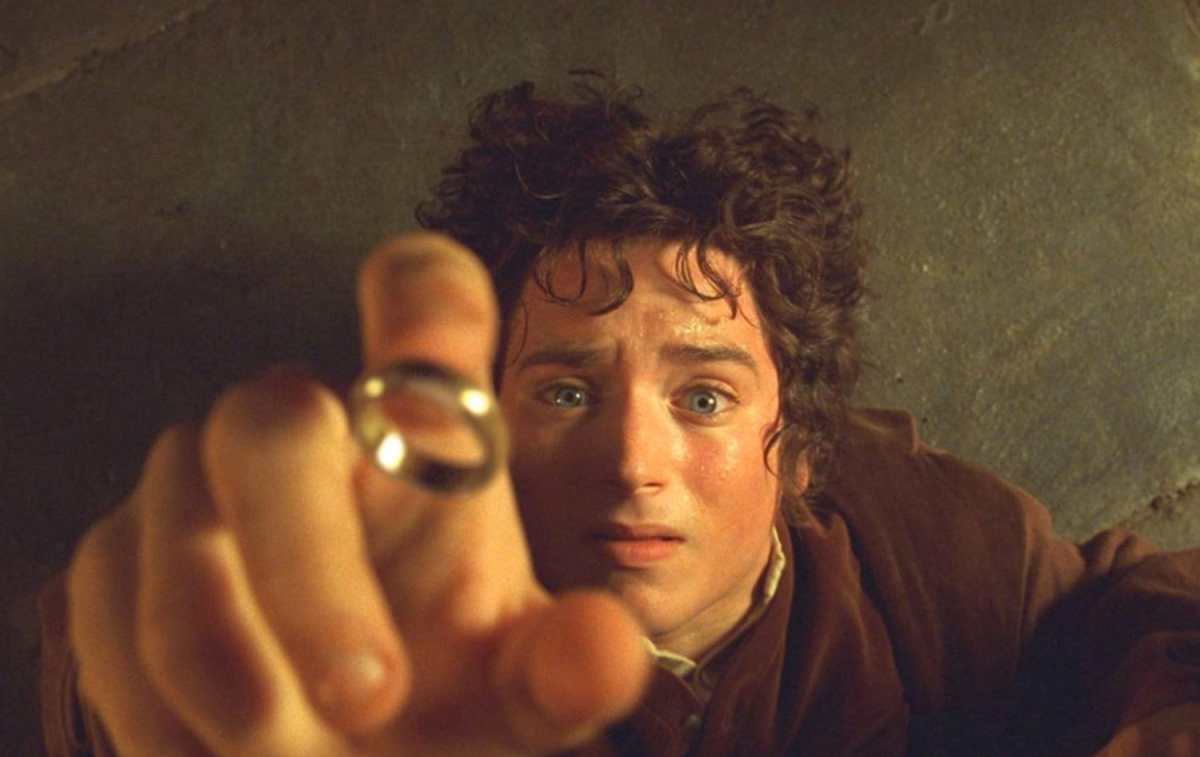To mark the 20th anniversary of the Lord of the Rings film trilogy, we’re publishing a trio of articles this week looking at the movies. Check back tomorrow for a discussion of how The Two Towers anchors the trilogy around it.
At the time, Peter Jackson was an unconventional choice to handle a project as complicated and risky as the Lord of the Rings trilogy.
More established directors had failed to get a cinematic adaptation off the ground. John Lennon wanted Stanley Kubrick to direct a musical adaptation starring the Beatles. John Boorman would turn seeds from his aborted adaptation into Excalibur. George Lucas reportedly attempted to buy the rights to the books, and it has been speculated that failure spawned Willow. Ralph Bakshi adapted half of the trilogy into a 1978 animated movie, but its sequel went straight to television.
The Lord of the Rings was a demanding production, unlike anything that Hollywood had attempted before. It represented a clear opportunity for studio New Line Cinema to enter the big leagues, and reporters noted that it had “bet the farm” with a $300 million investment in the trilogy that represented the future of the studio. New Line’s international chief, Rolf Mittweg has conceded that — had even the first movie flopped — the trilogy could have been “a suicide mission” for the studio.
It feels appropriate that The Lord of the Rings finds wizened wizard Gandalf the Grey (Ian McKellen) gambling the fate of Middle-earth on the most unlikely of heroes, the Hobbit Frodo Baggins (Elijah Wood). New Line was doing something similar, placing its future in the hands of an indie director who had to that point in his career never done anything to suggest that he could be trusted to direct three movies simultaneously, far outside the studio’s reach in a country without a blockbuster film industry.

Jackson’s early career was largely defined by cheap horror movies. He made his directorial debut with Bad Taste, a gory horror comedy that he filmed on weekends over several years with many of his close friends. He followed Bad Taste with Meet the Feebles, a grotesque musical comedy starring puppets. His third feature was the comedy horror Braindead, released in the United States under the title Dead Alive.
These were all quirky and eccentric low-budget exploitation films: Bad Taste cost $25,000, Meet the Feebles cost $750,000, and Braindead cost $3 million. That said, there was perhaps some sense of ambition and scale to be found in these early genre pieces. Braindead is notable for using around 300 liters of fake blood. After these initial three movies, Jackson began to transition into more conventional and mainstream movie-making, notably with the independent film Heavenly Creatures.
Heavenly Creatures was based on the notorious true story of the Parker–Hulme murder case in Christchurch, New Zealand. The idea of building a drama around that story originated with Jackson’s partner and producer Fran Walsh. Heavenly Creatures made a splash on the independent circuit, notably as a breakout role for a young British performer named Kate Winslet. It also earned Jackson and Walsh an Oscar nomination for Adapted Screenplay.
The success of Heavenly Creatures opened doors in Hollywood for Peter Jackson. Like a lot of directors, Jackson tried to transition from an indie hit to a bigger and broader studio hit. He directed the film The Frighteners at Universal. In some ways, The Frighteners could be seen as a test case for The Lord of the Rings. Jackson’s big idea was to keep costs low by filming in New Zealand, bringing Michael J. Fox to Wellington for the shoot.

Hollywood was intrigued by Jackson’s ingenuity. Excited by how smoothly production was going on The Frighteners, Universal eagerly lined up an even bigger budget follow-up for the director, a remake of King Kong. Unfortunately, The Frighteners underperformed at the box office, earning just under $17 million on a budget of around $30 million. Universal pulled the plug on King Kong, and Jackson would wait almost a decade to realize his version of the classic creature feature.
With all of that context in mind, it seems ridiculous that New Line decided to entrust Jackson with The Lord of the Rings. It was essentially trusting Jackson to repeat the experiment that he had attempted with The Frighteners — bringing a Hollywood production to New Zealand — but working on three films simultaneously with 10 times the budget in a genre that Jackson had no tangible experience and for which there seemed to be little public appetite. It was an absurd roll of the dice.
Of course, in hindsight, it seems absurd to suggest that the Lord of the Rings trilogy could have come from any director but Peter Jackson. Part of this is simply down to the production machine that made the films possible. The trilogy’s special effects — including Gollum (Andy Serkis) — were overseen by Weta Digital, the company founded by Jackson with Richard Taylor and Jamie Selkirk to work on Heavenly Creatures. Taylor’s Weta Workshop developed a lot of the costuming and props.
More fundamentally, Jackson’s insistence on shooting the Lord of the Rings trilogy in New Zealand gives the films their unique look and texture. The films and the country are almost inseparable. The release of the films reportedly coincided with a 50% increase in tourism to the country. The country has leaned into the branding, even offering to add a “Welcome to Middle-earth” stamp to tourists’ passports to coincide with the release of the first film in the Hobbit trilogy.

More than that, the original Lord of the Rings trilogy benefits greatly from the skills that Jackson honed during his early years as a director of trashy horror movies. The trilogy is expensive and looks amazing, but many of the techniques that Jackson employs are highly stylized and classical. To capture the different sense of scale for the Hobbits as compared to the rest of the cast, Jackson used the classic technique of forced perspective, which lends the movie a heightened aesthetic.
Although the Lord of the Rings trilogy attracts a lot of (deserved) attention for its pioneering computer-generated special effects, the films include a lot of practical choices that feel rooted in Jackson’s background as a low-budget filmmaker. The production used miniature models so large that they were called “bigatures.” Often, Jackson would frame Hobbits and Dwarves by simply asking the actors to kneel down in the shot.
Jackson’s techniques weren’t just frugal and efficient; they actively enriched the storytelling of the films. To pick one small example, there’s a moment in The Fellowship of the Ring where Frodo slips and falls down a snowy embankment. He loses the ring. Jackson’s camera captures the ring in intense close-up, Frodo in the distance. It’s a shot that underscores the power of the ring itself and Frodo’s relative insignificance. Jackson achieved that effect in shot by building a gigantic prop ring.
There are moments in the Lord of the Rings trilogy that feel of a piece with Jackson’s larger filmography. Anything involving the Ringwraiths looks like it could have come from The Frighteners. There’s a surprising amount of violence and blood splatter involving the orcs and goblins. There’s a creepiness to the characters wandering through caves and mines in The Fellowship of the Ring and The Return of the King, particularly when those spaces are haunted by ghosts and monsters. There’s something otherworldly about the characters’ visit to Galadriel (Cate Blanchett) in Lothlórien.

In many ways, Jackson’s work on the Lord of the Rings trilogy mirrors Sam Raimi’s contemporaneous work on the Spider-Man movies at Sony. Like Jackson, Raimi was a director who made an impression with early indie horror movies that he shot with his friends. Indeed, Jackson has acknowledged the influence of Evil Dead on his own work. Like Jackson with The Lord of the Rings, Sam Raimi was able to bring his own stylistic sensibility to an iconic property with his Spider-Man films.
It’s interesting to look back on the filmmaking gamble that was the production of the Lord of the Rings trilogy, particularly in an era where Chloé Zhao’s decision to shoot Eternals in real locations was enough to generate headlines. Indeed, there’s arguably a world of difference between the more practical approach that Jackson took with The Lord of the Rings and the more computer-generated, effects-driven work on the subsequent Hobbit trilogy.
Still, just as Frodo Baggins was both the most unlikely and the only possible hero of The Lord of the Rings, Peter Jackson was both a risky gamble and the right choice to direct the trilogy.






Published: Dec 14, 2021 12:00 pm